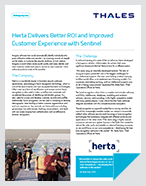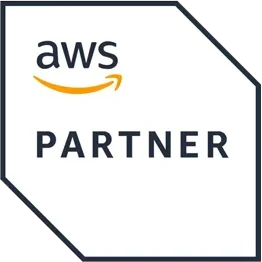 If you live in the 21st century and use a computer, then you have already come across the concept of software updates, and may even be familiar with patches. But as our lives become more technology-dependent, dealing with patches and updates has become more complex and time-consuming, an issue which was pinpointed by the National Institute of Standards and Technology (NIST) more than a decade ago. The problem is, such updates are also essential to ensure that you are using the right version of software, and more importantly, to safeguard your system from the possibility of a virus or other cyber breach (this webinar gives you an idea of the possible devastation caused by inadequate security).
If you live in the 21st century and use a computer, then you have already come across the concept of software updates, and may even be familiar with patches. But as our lives become more technology-dependent, dealing with patches and updates has become more complex and time-consuming, an issue which was pinpointed by the National Institute of Standards and Technology (NIST) more than a decade ago. The problem is, such updates are also essential to ensure that you are using the right version of software, and more importantly, to safeguard your system from the possibility of a virus or other cyber breach (this webinar gives you an idea of the possible devastation caused by inadequate security).
This has led to a new category of software: patch management solutions. One common example is Windows patch management, which automatically checks for the latest updates and bug fixes, and also ensures that they are correctly installed. Without patch management software, it remains the responsibility of the user to check and install any updates manually and in a busy office, it is all too easy for an essential patch to fall between the cracks, leaving the system open to vulnerabilities, as well as causing problems with the day-to-day running of unpatched items. A solid update management solution will take care of any patching, which saves a lot of time and potential heartache.
As a software provider, you will be using patch management at both ends of your business: as a consumer and as a vendor. Understanding the process will ensure you provide an optimal service to your clients, as well as protecting your own systems from any software vulnerabilities.
Let’s start by going back to basics to get a clear picture of how patch management works and what issues you need to be aware of when choosing a patch management vendor.
What is Software Patching?
A patch is a series of commands designed to upgrade or fix a problem with the software, or to resolve a software vulnerability. Software problems can occur when there is a bug in the original code, or when there is a gap that creates vulnerability. Patches work best when they are created in conjunction with the original code, but it is possible to write a patch even without the source code.
Historically, patches would be implemented as part of a maintenance update. In other words, they could only be applied when the software was offline. More recently, companies are demanding more of their software, and software providers are reluctant to have downtime. This is where hot-patching comes in. This new system allows a patch to be integrated live, thus limiting the need for offline maintenance.
What is the Purpose of Patching?
There are three main reasons for implementing a patch:
- Bug fixes: however carefully the source code is written, mistakes happen, and it’s not always possible to catch them before the software goes on general release. These can usually be sorted out quickly and easily with a software update via a patch
- Software updates: programs evolve and grow very quickly, and vendors want to be able to offer the latest software improvements to their customers. Rather than release a whole new version, a simple patch will add the new features to the old source code.
- Addressing security vulnerabilities: programmers can only protect against known security threats, but cybercriminals use new techniques to get a foothold in old software. Patches can protect against new vulnerabilities.
What Do I Need to Know about Software Patches?
The UK’s National Cyber Security Centre (NCSC) warns about the pitfalls of poor patch management. Since patching is arguably the most important way to manage vulnerabilities, as well as the easiest way to update software, they have to be treated carefully. There are a few common issues to look out for:
- It is important to ensure that patches are carefully crafted or they could inadvertently introduce even more problems to the software.
- Patches may contain fixes that affect several elements of the software, so applying a patch indiscriminately could cause significant issues.
- Software maintenance, which includes patches, is a significant part of software development costs, and this must be taken into account when building a new program. Software will have more longevity if it is created using source code that lends itself to the patching process.
- A failed patch can have devastating consequences so, in addition to a system of gradual roll-outs, a strong backup plan is essential.
What is Patch Management?
 Patch Management is a critical and essential process of updating networked computers for outdated or missing software updates. To get a clear idea of patch management, it helps to understand why it needs to be managed. To correct an individual problem, it's always possible to apply a single patch manually, even if it takes a bit of time. Once you start to multiply that by many issues though, manual patching begins to get complicated, and when you are using many types of software, it’s no longer feasible. That's where automated update management solutions come in. Automated patching software is designed to roll out patches as smoothly as possible according to your specific needs, so the most important updates for your business are prioritized.
Patch Management is a critical and essential process of updating networked computers for outdated or missing software updates. To get a clear idea of patch management, it helps to understand why it needs to be managed. To correct an individual problem, it's always possible to apply a single patch manually, even if it takes a bit of time. Once you start to multiply that by many issues though, manual patching begins to get complicated, and when you are using many types of software, it’s no longer feasible. That's where automated update management solutions come in. Automated patching software is designed to roll out patches as smoothly as possible according to your specific needs, so the most important updates for your business are prioritized.
How Does Automated Patch Management Work?
- The patching software checks for software updates. It will also check for any missed patches.
- It then manages the download process for scheduled patches and missing patches.
- The software applies the organization’s policies to the testing phase, ensuring that the patch works as required.
- Once the testing phase is complete, the patch management software will automatically deploy the patch according to the roll-out policy.
- Finally, a report of the patch process and results is automatically generated.
What are Patch Management Tools?
Patch management tools describe the different types of software that can be used for the process of automated patching. Some tools are operating-system-specific, for example, a Microsoft solution for Windows patch management, or software specifically for patching on Linux, Chrome, or other OS. Other automated patching solutions are designed to be used as part of a complete security system to ensure that all software vulnerabilities are covered, and cannot be purchased as stand-alone items. Some tools are simple to use but only support a limited number of apps, and there are heavy-duty update management solutions that are full of features and can be used for almost any kind of automated patching but may be costly and more complicated to run. Having a clear idea of what you need from your patch management software is essential to choosing the right tool for the job.
What is Cloud Patch Management?
There are two choices when selecting your patch management solution: a system-based tool or a cloud-based tool. With the right patch management vendor, it shouldn’t matter which version you choose as both are capable of doing the job. The advantage of cloud patch management is mainly financial.
Choosing the Right Patch Management Solution
Switching to automated patch management may involve many factors and needs to take your organization's specific needs into consideration:
- The size of your organization and IT budget: automated patching is part of a best-practice security solution and should be considered a priority, but any software must fit into the business model, and the patch management solution you choose should be part of an ROI-based solution.
- Practicable: bear in mind who will be managing the software within your organization and choose your system accordingly. If the UI is complicated, it may not be the right solution for you.
- Suitable for your organization’s software usage: a low-budget solution may do the job, but if it involves too much downtime, it may not be the right choice for you. Consider using a cloud-based automated patch management solution that utilizes the hot-patch method to keep your software online as much as possible.
- Scalability if your organization is already experiencing growth or is planning an expansion, choosing a corresponding patch management solution is going to save time and money. Consider a patch management vendor with different levels of service which can grow with you.
- Creating a complete cyber security solution: patch management should form part of a complete suite of software maintenance and cyber security tools. When choosing a system, it should integrate with other security software and complement it so that they don’t conflict. Otherwise, the clash can cause problems and even bring one or more programs to a standstill.
Patch Management Best Practices
Industry best practices for patch management include legacy guidelines for manual patch management and a separate set of guidelines for automated patch management. The first list is less relevant for day-to-day use as automation becomes more widespread, but it helps to explain the patch management process in-depth:
- Visibility: create an inventory of all assets, operating systems, and software. You can’t patch what you don’t see, so mapping is essential.
- Policy creation: all cyber security solutions should be company-wide, and that includes patching. This may require a team to sit down together and hash out a policy that works for all areas of business.
- Prioritization: this may be decided as part of the patching policy you already developed. Decide which elements should be prioritized and the order in which patches are rolled out.
- Stay up-to-date: make sure that updates are flagged up, and chase after software vendors if necessary.
- Testing: not all patches go smoothly, and not all systems process patches the same way. Start by testing the patch carefully to catch serious problems early.
- Roll-out: once the patch passes the testing phase, you can roll it out in compliance with the patching policy you created.
- Assessment: check that all aspects of the system have responded well to the patch and provide feedback to the vendor if necessary.
 What are the best practices when choosing an automated patch management vendor specifically?
What are the best practices when choosing an automated patch management vendor specifically?
It is helpful to keep the legacy solution best practice guidelines in mind in addition to the following steps which will ensure that you choose the right software for your automated patch management needs:
- Policy creation: yes, just as with manual patching, IT solutions and cyber security solutions need to apply across the board within an organization, including a common terminology to prevent misunderstandings.
- Cross-checking: as with any automated system, patch management software should be checked manually every so often to ensure that it is doing its job.
- Emergency measures: this may form part of the company policy you wrote earlier. A patch may not go according to plan, even after rigorous testing. Either embed the option to roll back to a previous version of the software, or create a backup plan for any problems that arise during the patching process.
- Be mindful of unpatched elements: if you're excluding certain assets or systems from any particular patch, keep an eye out for problems with software compatibility and cyber security.
- Centralization: automated patching works best when the system is viewed holistically.
- Assessment: even automated processes can be cumbersome, and regular assessments allow you to reevaluate how well the system is working and what changes are needed.
Streamlining the Process with a Patch Management Vendor
Automation is more than just a buzzword in our modern world; it is essential to keep systems working smoothly. As a software patch management vendor, building the possibility for future patches into the original software will enable a streamlined process when updates are released or when new security threats evolve. By considering patch management automation, you can make life easier for yourself, and keep your customers happy at the same time. Find out more about how Thales solutions can help you manage your software long after it's released.

Effective Embedded Software Licensing Models for High Tech Manufacturers - White Paper
4 Steps to an Effective Embedded Software Monetization Strategy The introduction of software into the hardware manufacturer’s business presents many challenges and is forcing operational changes for which some device manufacturers are not prepared. However, some embedded...

Simplify Internal Licensing Processes - Herta Case Study
Simplify Internal Licensing Processes While Embracing Flexible Licensing - HERTA Case StudyHERTA Security Imagine a software technology that could automatically identify individuals that pose a threat to safety and security – by scanning crowds of people on the streets,...

Defend and Protect Intellectual Property Against Threats
Defending Against The Quadruple Threat to Intellectual Property - White PaperTechnology and innovation have never moved faster and most of it involved software in form or another. Learn how Thales can help you protect against the quadruple threat of intellectual property...



